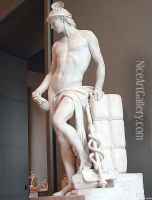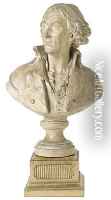Jacques-Augustin Pajou Paintings
Jacques-Augustin Pajou was a French sculptor, born on September 19, 1730, in Paris, France. He is known for his work within the Rococo style, which was characterized by ornate and decorative art and architecture. Pajou demonstrated a profound talent for sculpture from an early age and won the prestigious Prix de Rome—a French scholarship for arts students—in 1752. This award enabled him to study at the French Academy in Rome from 1752 to 1756, where he was heavily influenced by the works of classical antiquity and the Renaissance masters.
Upon his return to France, Pajou quickly gained recognition and was commissioned to produce numerous public and private works. He became a member of the Royal Academy of Painting and Sculpture in 1760 and later served as a professor there, contributing to the education of future generations of artists. His sculptures were often characterized by grace, delicacy, and vivacious expression, embodying the Rococo spirit.
Among Pajou's notable creations are the busts of many important figures of his time, including Louis XV, and statues and reliefs for various royal residences such as the Palace of Versailles. He also created religious works, such as the altar at the Church of Saint-Sulpice in Paris and sculptures for the Cathedral of Notre Dame.
During the French Revolution, Pajou's career faced challenges as the Rococo style fell out of favor and neoclassicism took hold. Nevertheless, he managed to navigate the changing tastes and political climate, continuing to work and create significant art pieces.
Jacques-Augustin Pajou passed away on May 8, 1809, in Paris. His legacy lives on through his numerous sculptures that capture the elegance and sophistication of the Rococo era. Pajou is remembered as one of the leading French sculptors of the 18th century, whose work bridged the gap between the Rococo and the early neoclassical style.
![Bacchante tenant un tambour de basque, avec deux enfants [detail #3] (Bacchante holding a tambourine, with two children)](https://www.niceartgallery.com/pic/e4b2116/245352s.jpg)
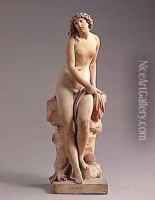
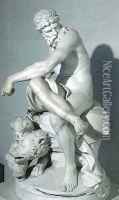
![Ariane abandonnee par Thesee [detail #2] (Ariadne abandoned by Theseus)](https://www.niceartgallery.com/pic/ad1da7bf/245351s.jpg)
![Elisabeth Vigee-Lebrun [detail #2]](https://www.niceartgallery.com/pic/4475aa5d/245355s.jpg)
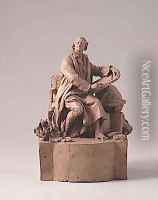
![Ariane abandonnee par Thesee [detail #1] (Ariadne abandoned by Theseus)](https://www.niceartgallery.com/pic/2b4ea75/245361s.jpg)
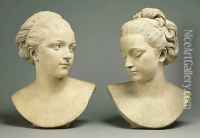
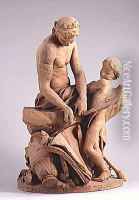
![Bacchante tenant un tambour de basque, avec deux enfants [detail #2] (Bacchante holding a tambourine, with two children)](https://www.niceartgallery.com/pic/a1e26cdc/245362s.jpg)
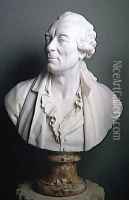
![Psyche abandonnee [detail #1] (Psyche Abandoned)](https://www.niceartgallery.com/pic/735e3a62/245358s.jpg)
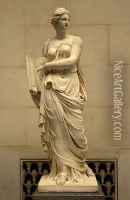
![Elisabeth Vigee-Lebrun [detail #1]](https://www.niceartgallery.com/pic/93972a05/245354s.jpg)
![Anacreon arrachant une plume des ailes de l'amour [detail #1] (Anacreon tearing a feather from off the wings of Cupid)](https://www.niceartgallery.com/pic/3c3e67cf/245364s.jpg)
